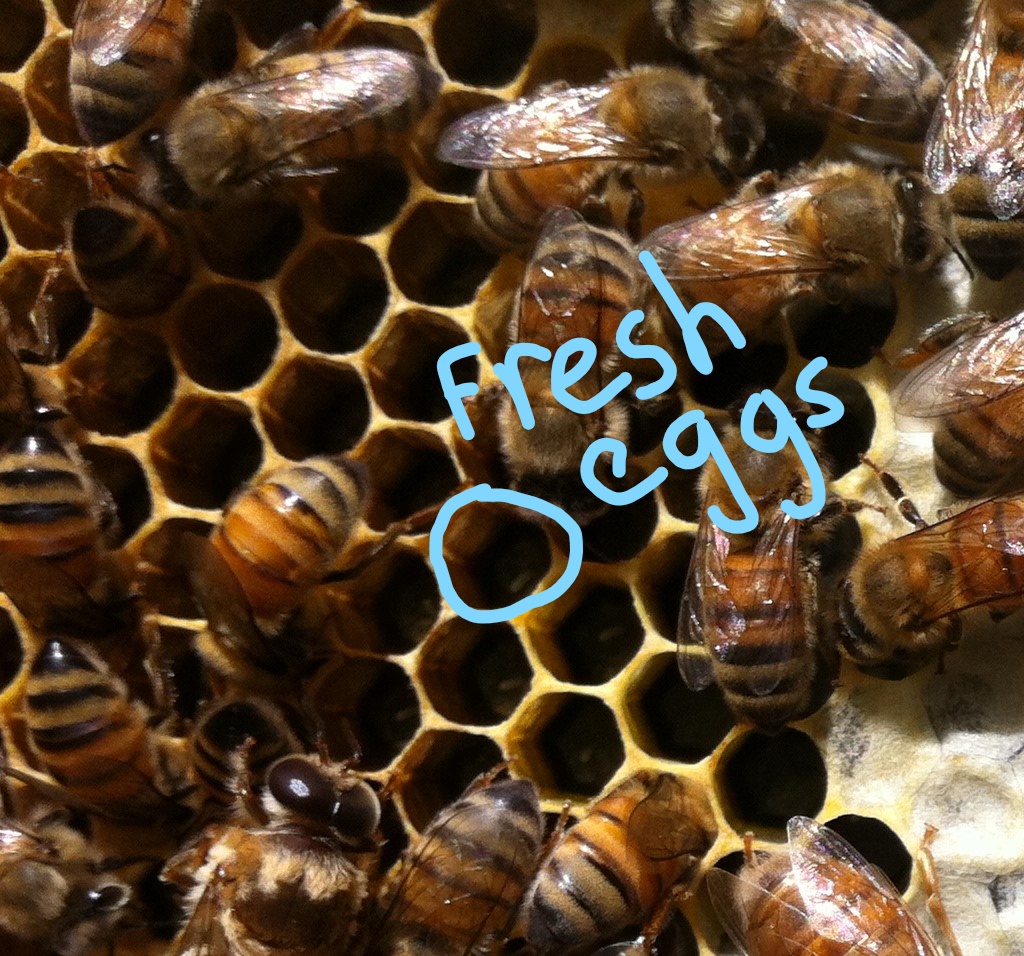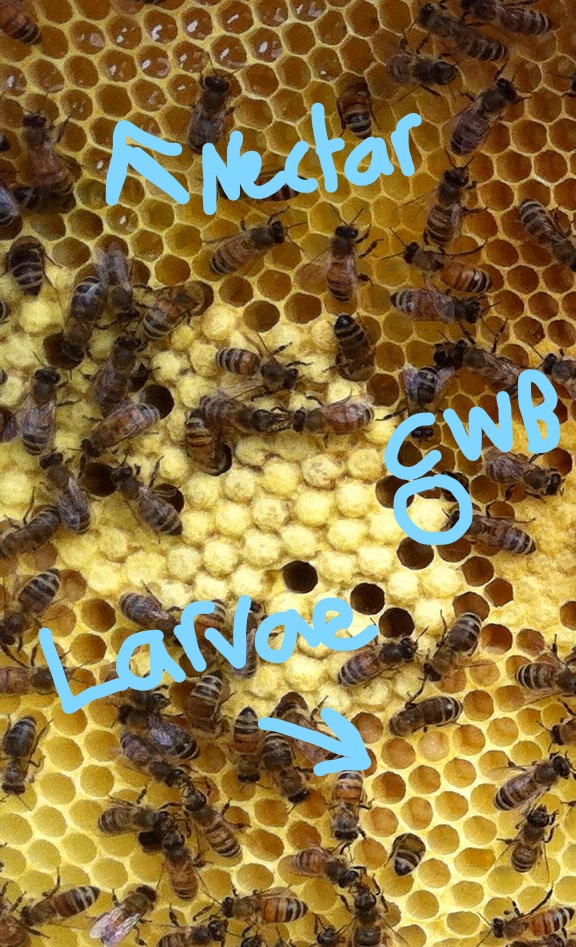
Technique and Tips for First Inspections:
Before you Pop the Lid
Look over your BLANK inspection sheet and review PRIOR ones!
- Kow your mission. Queen checkup? Comb Drawing progress? Filling Supers? Mite check?
- Have a frame grabber or grip, and 2-3 hive tools, ideally in a different style.
- Have your inspection sheet and 2 writing implements handy. And your camera/phone.
- Be consistent about where you lay down your tools. I lay them on the hive next door, never on the ground.
- Light smoker before popping lid, and have extra fuel within arm's reach.
- Use a 1 lb Propane tank with a self-igniting torch attachment to light the smoker.
- Also have a bucket of water for sticky hands (or a smoker mishap), and a 2 gal bucket with a lid for wax scrapings.
Technique and Tips for First Inspections:
- Inspection tips for good karma and calm bees:
- Avoid rolling or crushing bees. Cease progress and lightly smoke the affected zone if you do end up rolling/crushing any.
- Avoid banging, scraping, and other bear-like noises.
- Avoid blocking the entrance, or placing any hive parts under the entrance. The bees imprint on the appearance of the entrance.
- Note that if you smoke the entrance, or smoke the hive excessively, bees will be very disrupted. If that isn't the effect you want, save the smoke for a few puffs at your work zone IF it is crowded with bees.
- Check out this video starting at about the 5 min mark.
- Take off the lid, and the feeder box. And the feeders - since the bees have access to this space, there will eventually be bees on the feeders. Just don't smoosh any as you pick the feeders up, and gently set near the entrance. The bees will make their way in.
- Pry the inner cover off in one slow move; don't let it go up and down, crushing bees if they crawl up. Use 2 hives tools if needed, one to hold a space, another to expand the opening. This won't be an issue until week 4 or so.
- Set the inner cover against the side of the hive, near but not under the entrance (and not at your feet). It's ok if its covered with bees initially; they can smell their way to the entrance, if it's close. Or they will hang out until you put the inner cover back.
- Use the hive tool to loosen the first frame, on the side with the most room between frame and side wall. Use a frame grabber to pull out the first frame only, and use your hands for the rest.
- Slowly lift this frame out. Then place leaning on the inner cover.
- Separate the next frame enough to get your fingers around the sidepieces of the frame, then lift and examine, then replace where the first frame was. Make a note after every 2 frames about what was on them.
- Move frames at bee walking speed, when pushing apart, pulling up, or replacing in the hive.
- Plan on removing up to 4 frames to answer all of your questions.
- I like to place each examined frame firmly against its neighbor (so, frames 2-4 here). Then I can push all 3 at the same time back in place - or within a bee space, then I use the smoker to clear the gap of bees, or use my hive tool to gently move the bees along out of the gap.
- Then replace the last frame, very slowly, and press firmly against frame 2 to leave a space against the wall.
To identify what's on a frame:
1. Finding Eggs: Find a frame with drawn comb, but NO CLEAR SHINY LIQUID in the middle.
Stand with the frame held over the hive, but the sun or most light coming from
behind you. If there's eggs, you'll see 'em.
2. Finding Larvae: Look next to capped brood (CWB below), and look for milky liquid in the cells.
3. Finding capped brood: AKA CWB for capped worker brood. It is in the middle of the frame, with a solid not translucent capping, that looks like toffee.
4. Finding Nectar: It's clear and shiny, fills cells to the top, and is either at the top of the frame, or fills the whole frame.
Notice I didn't mention honey. It will be found where nectar was, later in the summer. Initially the bees are pretty focused on construction, rather than on savings.


A quick note about your first inspection...
I do remember my first time opening the hive. I was feeling...unsure of the situation. ;) All those stinging insects staring at me... I was gentle, it was fine. If you don't act like a bear, the bees will for the most part ignore you. I have the smoker going in case I crush a bee, drop a frame, or the inner cover - it happens, the bees forgive us, we move on.